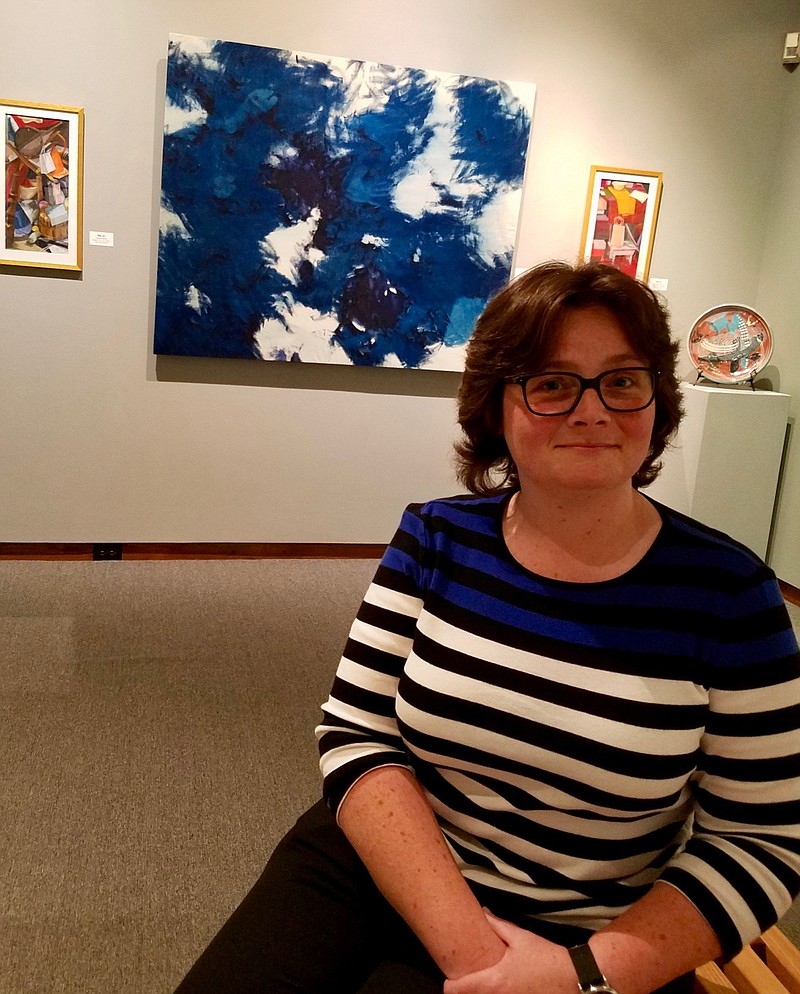A new presence at the Regional Arts Center downtown aims to further strengthen the visual arts programming and connection to arts education.
Dr. Becky Black has joined other arts center staff in the agency's mission to foster an arts-rich community here in Texarkana. Armed with a Ph.D. in art history and education, she's taken the helm as visual art and community programs coordinator for the Texarkana Regional Arts and Humanities Council.
In her work, Black will try to fill some pretty big shoes. She replaces Amy Donohoe, who helped deepen the arts programming at the Regional Arts Center and made its signature show, the adult juried show, gain more of a national standing.
Black earned her doctorate at the University of Arizona. Her particular focus was art and visual culture education, which should be directly applicable to her work for TRAHC. Her master's degree in art history came from the University of Houston, where she experienced a city thriving with its art and food culture.
"I actually grew up in Memphis, came camping here in Texarkana a few times with family because we have family in Arkansas," Black said.
She's worked at several museums around the country, striving to engage different audiences through educational programming.
"As an art historian I primarily studied World War I and World War II commissioned art, so art of soldiers in Europe," Black said. Her interest in such art was first kindled by World War I poetry, such as Wilfred Owen.
"But in terms of art education, I studied where classroom instruction and museum education sort of intersect and what we could learn from museums in the classrooms and classrooms could learn from museums and vice versa," said Black, whose experience includes university-level teaching.
How can museums engage different communities through art?
"In making the art more relevant, so choosing art that's not intentionally obscure, choosing works that have a meaning to that particular community," Black said.
In Tucson, Ariz., she said, she worked with the Jewish History Museum and focused on the area's Jewish community history. They started from there and built on it. And at the University of Arizona Museum of Art, she helped develop a program that targeted LGBTQ senior citizens in Tucson, responding to scholarship that shows that seniors, regardless of identity and orientation, are often left behind in society, she said.
Black finished up her doctorate work this May, so she worked on that and also taught at the University of Houston-Downtown prior to coming to Texarkana. Her favorite coursework to teach was art history, and she also taught world art this past year, a topic she enjoyed.
About the art that came from war, Black sees the direct effect it's had on the world. "Seeing the representations, particularly World War I, of soldiers and the aftermath of the war, I don't think we'd have the programming we have for veterans in terms of PTSD treatment, stress combat treatment, that we have now without some of those pieces," she said.
At TRAHC, she'll plan exhibitions and run the Arts on Main program. She plans on building on the "phenomenal work" Donohoe accomplished.
"I want to build on that with my strengths being from the museum world as well as an educator myself at the university level-sort of combining those things," Black said.
Educational components will be part of the exhibitions, and so she will reach out to the school districts, the local colleges and universities, and community groups here. She looks forward to building those personal relationships, which is something that can be done in a city the size of Texarkana, she said.
She's impressed with what she saw with the Juried Exhibition here and the number of entries it's seen, as well as its quality. She's impressed, too, that an abstract piece won Best of Show.
"I hope to live up to that if not expand it even more and reach out to other parts of the U.S. with my background sort of also being all over the U.S.," she said about the reach of the Juried Exhibition. "I hope that will come in handy in promoting that show."
And why come to Texarkana?
"It's exactly because it's a smaller town and this is a smaller organization that has made a difference in this community, from what I can tell and what research I did when looking at this position," Black said. It's a place where she can make an impact with her ideas, too, a place where, as she put it, she can "get my hands dirty."
Black welcomes contact from the community at [email protected] or 903-792-8681.
(On the Net: TRAHC.org.)

